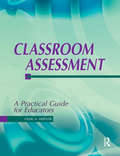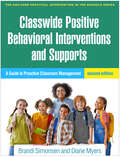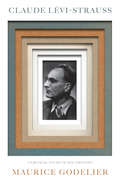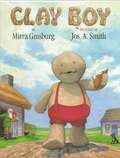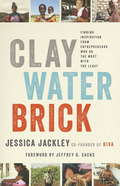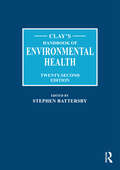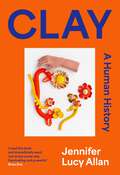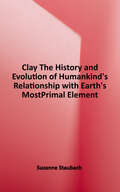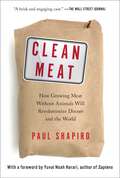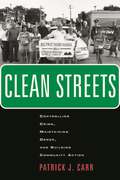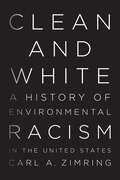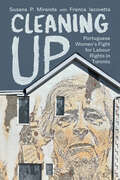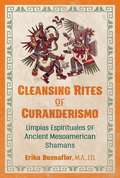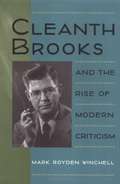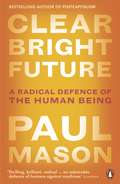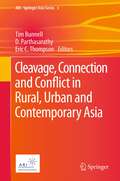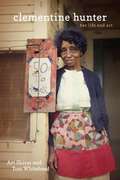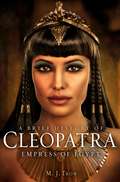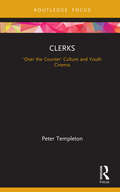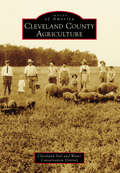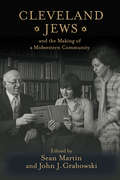- Table View
- List View
Classroom Assessment: A Practical Guide for Educators
by Dr Craig Mertler• Provides detailed information on· the functions of assessment;· how to construct, administer, and interpret the results of teacher-developed assessment techniques; and· how to interpret the results of externally developed instruments such as standardized tests.• Both traditional and newer, alternative assessment techniques are covered.• Advantages and disadvantages of each assessment technique are discussed.• A companion website helps both instructors and students obtain additional information on topics of special interest to them.• Numerous examples of the principles and procedures make it easy for students to understand the material.• The highly practical nature of this book stems from the focus on how assessment intertwines with other everyday activities in classrooms.• Measurement theory and computational procedures that are unlikely to be used by classroom teachers are de-emphasized, producing a textbook that provides comprehensive coverage without being unnecessarily technical.
Classwide Positive Behavioral Interventions and Supports: A Guide to Proactive Classroom Management (The Guilford Practical Intervention in the Schools Series)
by Diane Myers Brandi SimonsenNow in a revised and updated second edition addressing the evolving needs of today's K–12 educators, this established classroom resource is written by leaders in positive behavioral interventions and supports (PBIS). Brandi Simonsen and Diane Myers provide a vital classroom management and behavior support toolkit with a primary focus on universal (Tier 1) support. In a convenient large-size format, the book provides step-by-step guidelines for structuring the classroom environment, actively engaging students in instruction, setting clear expectations, and implementing a continuum of strategies to reinforce positive behavior and respond to inappropriate behavior. Teacher-friendly features include classroom vignettes, bulleted chapter objectives, end-of-chapter learning activities, and reproducible forms that can be downloaded for repeated use. New to This Edition *Expanded focus on culturally responsive and inclusive practice. *Increased attention to connecting with students and families and engaging them in designing, implementing, and monitoring practices. *More coverage of integrating Tier 2 and Tier 3 interventions into a classwide PBIS model. *Updated research, resources, tools, and examples throughout the chapters. This book is in The Guilford Practical Intervention in the Schools Series, edited by Sandra M. Chafouleas.
Claude Lévi-Strauss
by Maurice GodelierOne of the world's leading anthropologists assesses the work of the founder of structural anthropologyAnthropologist Claude Lévi-Strauss was among the most influential thinkers of the 20th century. In this rigorous study, Maurice Godelier traces the evolution of his thought. Focusing primarily on Lévi-Strauss' analysis of kinship and myth, Godelier provides an assessment of his intellectual achievements and legacy. Meticulously researched,Claude Lévi-Strauss is written in a clear and accessible style. The culmination of decades of engagement with Lévi-Strauss' work, this book will prove indispensible to students of Lévi-Strauss' thought and structural anthropology more generally.
Clay Boy
by Mirra GinsburgAn insatiable boy made of clay devours everything in sight until a feisty goat ruins his appetite.
Clay Water Brick: Finding Inspiration from Entrepreneurs Who Do the Most with the Least
by Jeffrey D. Sachs Jessica JackleyIn the tradition of Kabul Beauty School and Start Something That Matters comes an inspiring story of social entrepreneurship from the co-founder of Kiva, the first online microlending platform for the working poor. Featuring lessons learned from successful businesses in the world's poorest countries, Jessica Jackley's Clay Water Brick will motivate readers to more deeply appreciate the incredible entrepreneurial potential that exists in every human being on this planet--especially themselves."The heart of entrepreneurship is never about what we have. It's about what we do." Meet Patrick, who had next to nothing and started a thriving business using just the ground beneath his feet . . . Blessing, who built her shop right in the middle of the road, refusing to take the chance that her customers might pass her by . . . Constance, who cornered the banana market in her African village with her big personality and sense of mission. Patrick, Blessing, Constance, and many others are among the poorest of the world's poor. And yet they each had crucial lessons to teach Jessica Jackley--lessons about resilience, creativity, perseverance, and, above all, entrepreneurship. For as long as she could remember, Jackley, the co-founder of the revolutionary microlending site Kiva, had a singular and urgent ambition: to help alleviate global poverty. While in her twenties, she set off for Africa to finally meet the people she had long dreamed of helping. The insights of those she met changed her understanding. Today she believes that many of the most inspiring entrepreneurs in the world are not focused on high-tech ventures or making a lot of money; instead, they wake up every day and build better lives for themselves, their families, and their communities, regardless of the things they lack or the obstacles they encounter. As Jackley puts it, "The greatest entrepreneurs succeed not because of what they possess but because of what they are determined to do." In Clay Water Brick, Jackley challenges readers to embrace entrepreneurship as a powerful force for change in the world. She shares her own story of founding Kiva with little more than a laptop and a dream, and the stories and the lessons she has learned from those across the globe who are doing the most with the least. Praise for Clay Water Brick "Jessica Jackley didn't wait for permission to change the world--she just did it. It turns out that you can too."--Seth Godin, author of What to Do When It's Your Turn "Clay Water Brick is a tremendously inspiring read. Jessica Jackley, the virtuoso co-founder of the revolutionary microlending platform Kiva, shares uplifting stories and compelling lessons on entrepreneurship, resilience, and character."--Adam Grant, author of Give and Take "With only a dream and a lot of determination, Jessica Jackley founded Kiva, an organization that has empowered millions of people around the world. Clay Water Brick is the inspiring story of her own far-flung journeys as an entrepreneur, but it's also a blueprint for anyone who wants to make the world a better place and find fulfillment in the process, no matter how scarce their resources or how steep the challenge."--Arianna Huffington "Inspiring and insightful, Clay Water Brick is a book you simply won't be able to put down. Jessica Jackley has created a timeless read for every aspiring entrepreneur."--Adam Braun, author of The Promise of a PencilFrom the Hardcover edition.
Clay's Handbook of Environmental Health
by Stephen BattersbySince its first publication in 1933, Clay’s Handbook of Environmental Health (under its different names) has provided a definitive guide for the environmental health practitioner (EHP), and an essential reference for the consultant and student. This 22nd edition continues with its more recent successful structure, reviewing the core principles, techniques, competencies and skills required of an EHP, and then outlining the specialist subjects without getting bogged down in a legalistic approach, seeking to broaden the content for a more global audience. This new edition seeks to educate the EHP on the public health impacts of global heating and the climate emergency and also reflects the COVID-19 pandemic, as might be expected. Although seeking to have global appeal, the impact of the UK leaving the EU is also addressed. The book examines environmental health in different settings, including in the military, working in both conflict and natural disaster settings, and environmental health at sea and airports. In line with previous editions, case studies are used to illustrate how EH problems have been resolved. This new edition includes guidance on key issues in public and environmental health including air pollution, contaminated land, housing and health, noise, water, food safety, pests and vector control, chemicals in the environment and radiation, as well as sustainability and public health and humanitarian crises. This handbook aims to give a basic understanding of the philosophical basis of environmental health, as well as the required technical aspects and an understanding of environmental health in different settings. All chapters have sections on further reading and sources of information. Clay’s Handbook is essential reading for all practitioners, students and researchers in environmental and public health wherever they are working.
Clay: A Human History
by Jennifer Lucy Allan'Clay contains infinite possibilities in its transmutations, evidenced on the shelves of our homes, our galleries and museums. Every time we make something with clay, we engage with the timelines that are in the material itself, whether it was dug from a clifftop, riverbed or pit. In firing what we make, we bestow the material with function, meaning, or feeling, and anchor its form in a human present... Objects made from clay contain marks of our existence that collectively tell the story of human history more completely than any other material. There is a reason there are so many pots in museums: because fired clay is one of the most effective keepers of stories we have.'This book is a love letter to clay, the material that is at the beginning, middle and end of all of our lives; that contains within it the eternal, the elemental, and the everyday.People have been taking handfuls of earth and forming them into their own image since human history began. Human forms are found everywhere there was a ceramic tradition, and there is a ceramic tradition everywhere there was human activity. The clay these figures are made from was formed in deep geological time. It is the material that God, cast as the potter, uses to form Adam in Genesis. Tomb paintings in Egypt show the god Khnum at a potter's wheel, throwing a human. Humans first recorded our own history on clay tablets, the shape of the characters influenced by the clay itself. The first love poem was inscribed in a clay tablet, from a Sumerian bride to her king more than 4000 years ago. Born out of a desire to know and understand the mysteries of this material, the spiritual and practical applications of clay in both its micro and macro histories, Clay: A Human History is a book of wonder and insight, a hybrid of archaeology, history and lived experience as an amateur potter.
Clay: A Human History
by Jennifer Lucy Allan'Clay contains infinite possibilities in its transmutations, evidenced on the shelves of our homes, our galleries and museums. Every time we make something with clay, we engage with the timelines that are in the material itself, whether it was dug from a clifftop, riverbed or pit. In firing what we make, we bestow the material with function, meaning, or feeling, and anchor its form in a human present... Objects made from clay contain marks of our existence that collectively tell the story of human history more completely than any other material. There is a reason there are so many pots in museums: because fired clay is one of the most effective keepers of stories we have.'This book is a love letter to clay, the material that is at the beginning, middle and end of all of our lives; that contains within it the eternal, the elemental, and the everyday.People have been taking handfuls of earth and forming them into their own image since human history began. Human forms are found everywhere there was a ceramic tradition, and there is a ceramic tradition everywhere there was human activity. The clay these figures are made from was formed in deep geological time. It is the material that God, cast as the potter, uses to form Adam in Genesis. Tomb paintings in Egypt show the god Khnum at a potter's wheel, throwing a human. Humans first recorded our own history on clay tablets, the shape of the characters influenced by the clay itself. The first love poem was inscribed in a clay tablet, from a Sumerian bride to her king more than 4000 years ago. Born out of a desire to know and understand the mysteries of this material, the spiritual and practical applications of clay in both its micro and macro histories, Clay: A Human History is a book of wonder and insight, a hybrid of archaeology, history and lived experience as an amateur potter.
Clay: The History and Evolution of Humankind's Relationship with Earth's Most Primal Element
by Suzanne StaubachThe clay beneath our feet is crucial to the computer and space industries, biotechnology, publishing, and a wide range of manufacturing processes. The potter's wheel was the very first machine. With the invention of pottery came cooking and storage vessels, ceramics, the discovery of alcoholic beverages, the oven, clay tablets for the first written communication, irrigation for agriculture, vast trade networks, plumbing, sanitation, and an incredibly durable building material. Much of the Great Wall of China was made of fired clay bricks-a material that can stand for centuries. Now, Suzanne Staubach presents a lively look at how civilization was built on clay-from the first spark plugs to modern semi-conductors, satellite communications to surgical equipment. Clay is a fascinating, colorful look at how, from the primordial ooze to modern miracles, this humblest of substances continues to shape our world in ways limited only by the human imagination.
Clean Meat: How Growing Meat Without Animals Will Revolutionize Dinner and the World
by Paul ShapiroPaul Shapiro gives you a front-row seat for the wild story of the race to create and commercialize cleaner, safer, sustainable meat—real meat—without the animals. From the entrepreneurial visionaries to the scientists&’ workshops to the big business boardrooms—Shapiro details that quest for clean meat and other animal products and examines the debate raging around it.Since the dawn of Homo sapiens some quarter million years ago, animals have satiated our species&’ desire for meat. But with a growing global population and demand for meat, eggs, dairy, leather, and more, raising such massive numbers of farm animals is woefully inefficient and takes an enormous toll on the planet, public health, and certainly the animals themselves. But what if we could have our meat and eat it, too? The next great scientific revolution is underway—discovering new ways to create enough food for the world&’s ever-growing, ever-hungry population. Enter clean meat—real, actual meat grown (or brewed!) from animal cells—as well as other clean foods that ditch animal cells altogether and are simply built from the molecule up. Also called lab-grown meat, cultured meat, or cell-based meat, this race promises promise to bring about another domestication. Whereas our ancestors domesticated wild animals into livestock, today we&’re beginning to domesticate their cells, leaving the animals out of the equation. From one single cell of a cow, you could feed an entire village. And the story of this coming &“second domestication&” is anything but tame.
Clean New World: Culture, Politics, and Graphic Design
by Maud LavinOur culture is dominated by the visual. Yet most writing on design reflects a narrow preoccupation with products, biographies, and design influences. Maud Lavin approaches design from the broader field of visual culture criticism, asking challenging questions about about who really has a voice in the culture and what unseen influences affect the look of things designers produce. Lavin shows how design fits into larger questions of power, democracy, and communication. Many corporate clients instruct designers to convey order and clarity in order to give their companies the look of a clean new world. But since designers cannot clean up messy reality, Lavin shows, they often end up simply veiling it. Lacking the power to influence the content of their commercial work, many designers work simultaneously on other, more fulfilling projects. Lavin is especially interested in the graphic designer's role in shaping cultural norms. She examines the anti-Nazi propaganda of John Heartfield, the modernist utopian design of Kurt Schwitters and the neue ring werbegestalter, the alternative images of women by studio ringl + pit, the activist work of such contemporary designers as Marlene McCarty and Sheila Levrant de Bretteville, and the Internet innovations of David Steuer and others. Throughout the book, Lavin asks how designers can expand the pleasure, democracy, and vitality of communication.
Clean Streets: Controlling Crime, Maintaining Order, and Building Community Activism (New Perspectives in Crime, Deviance, and Law #8)
by Patrick J. CarrWith the close proximity of gangs and the easy access to drugs, keeping urban neighborhoods safe from crime has long been a central concern for residents. In Clean Streets, Patrick Carr draws on five years of research in a white, working-class community on Chicago’s South side to see how they tried to keep their streets safe. Carr details the singular event for this community and the resulting rise of community activism: the shootings of two local teenage girls outside of an elementary school by area gang members. As in many communities struck by similar violence, the shootings led to profound changes in the community's relationship to crime prevention. Notably, their civic activism has proved successful and, years after the shooting, community involvement remains strong.Carr mines this story of an awakened neighborhood for unique insights, contributing a new perspective to the national debate on community policing, civic activism, and the nature of social control. Clean Streets offers an important story of one community's struggle to confront crime and to keep their homes safe. Their actions can be seen as a model for how other communities can face up to similarly difficult problems.
Clean and White: A History of Environmental Racism in the United States (Children and Youth in America)
by Carl A Zimring&“A comprehensive . . . and provocative exploration of environmental racism from the founding of the republic until the 1960s&” (American Historical Review)Clean and White offers a history of environmental racism in the United States focusing on constructions of race and hygiene. In the wake of the civil war, as the nation encountered emancipation, mass immigration, and the growth of an urbanized society, Americans began to conflate the ideas of race and waste. Certain immigrant groups took on waste management labor, fostering connections between the socially marginalized and refuse. Ethnic &“purity&” was tied to pure cleanliness, and hygiene became a central aspect of white identity. In Clean and White, Carl A. Zimring draws on historical evidence from statesmen, scholars, sanitarians, novelists, activists, advertisements, and the United States Census of Population to reveal changing constructions of environmental racism. The material consequences of these attitudes endured and expanded through the twentieth century, shaping waste management systems and environmental inequalities that endure into the twenty-first century. Today, the bigoted idea that non-whites are &“dirty&” remains deeply ingrained in the national psyche, continuing to shape social and environmental inequalities.
Cleaning Up: Portuguese Women’s Fight for Labour Rights in Toronto
by Susana P. MirandaThis fascinating book uncovers the little-known, surprisingly radical history of the Portuguese immigrant women who worked as night-time office cleaners and daytime “cleaning ladies” in postwar Toronto. Drawing on union records, newspapers, and interviews, feminist labour historians Susana P. Miranda and Franca Iacovetta piece together the lives of immigrant women who bucked convention by reshaping domestic labour and by leading union drives, striking for workers’ rights, and taking on corporate capital in the heart of Toronto’s financial district. Despite being sidelined within the labour movement and subjected to harsh working conditions in the commercial cleaning industry, the women forged critical alliances with local activists to shape picket-line culture and make an indelible mark on their communities. Richly detailed and engagingly written, Cleaning Up is an archival treasure about an undersung piece of working-class history in urban North America.
Cleansing Rites of Curanderismo: Limpias Espirituales of Ancient Mesoamerican Shamans
by Erika BuenaflorA tutorial on the ancient practice of limpias to heal the mind, body, and soul • Offers step-by-step instructions for the practice of limpias, shamanic cleansing rituals to heal, purify, and revitalize people as well as physical spaces • Examines different types of limpia ceremonies, such as fire rites for transformation, water rites for cleansing and influencing, and sweeping rites for divination • Explores the sacred stories behind limpia rituals and traces these curanderismo practices to their indigenous roots Exploring the essential tools and practices of Mesoamerican shamans and curanderos, specifically the ancient Yukatek Maya and Mexica (Aztec), Erika Buenaflor, M.A., J.D., provides a step-by-step guide for conducting the most common practice within curanderismo: limpias. These practical and incredibly effective shamanic cleanses heal, purify, and revitalize people and spaces with herbs, flowers, eggs, feathers, fire, and water. They are also powerful tools for self-empowerment, spiritual growth, soul retrieval, rebirth, and gracefully opening up pathways for new beginnings. Drawing on her 20 years’ experience as a curandera and her graduate studies focused on Mesoamerican shamanism, the author traces modern curanderismo practices to their indigenous roots. She explores the sacred stories behind limpia rituals and examines different types of limpia ceremonies in depth, such as fire rites for transformation, water rites for cleansing and influencing, and sweeping rites for divination. She outlines how limpias work holistically to enable one to let go and cleanse the body, mind, and spirit of limiting beliefs, traumas, and broken stories; heal acute and chronic illnesses such as depression, insomnia, and anxiety; and revitalize and activate sacred spaces by renewing their essence and clearing negative energies. She explains the healing properties of the plants used in limpia rites and how to perform the medicinal chants used by the curanderos. In addition, the author details how the practice of platicas, heart-straightening talks, supports limpia rites by encouraging one to vocalize their needs as they eject traumas and unwanted energies from the body, setting the stage for self-awareness and healing. Sharing the story of her own complete healing from a catastrophic injury with limpias as well as inspirational testimonies from others who have experienced limpias, the author provides a personal and thoroughly practical guide to the ancient shamanic method of limpias to promote healing and personal transformation in our times.
Cleanth Brooks and the Rise of Modern Criticism
by Mark Royden WinchellFrom the preface: "Cleanth Brooks (1906-94) was probably the most important literary critic to come to prominence during the second third of the twentieth century. In the generation before him, such pioneers as T. S. Eliot, I. A. Richards, and John Crowe Ransom helped fashion a criticism sophisticated enough to explain the radical innovations being wrought in poetry and fiction. (This approach to literary interpretation came to be called the "new criticism" simply because Ransom had given that innocuous title to a book he published in 1941.) Brooks applied the methods of this new criticism, not only to the modernist texts for which they were created, but to the entire canon of English poetry from John Donne to William Butler Yeats. In his many critical works, especially The Well Wrought Urn and the textbooks he edited with Robert Penn Warren and others, Brooks taught several generations of students how to read literature without prejudice or preconception. In addition to these achievements, Brooks helped invent the modern literary quarterly and wrote the best book yet on the works of William Faulkner."
Clear Bright Future: A Radical Defence of the Human Being
by Paul MasonA passionate defence of humanity and a work of radical optimism from the international bestselling author of PostcapitalismHow do we preserve what makes us human in an age of uncertainty? Are we now just consumers shaped by market forces? A sequence of DNA? A collection of base instincts? Or will we soon be supplanted by algorithms and A.I. anyway?In Clear Bright Future, Paul Mason calls for a radical, impassioned defence of the human being, our universal rights and freedoms and our power to change the world around us. Ranging from economics to Big Data, from neuroscience to the culture wars, he draws from his on-the-ground reporting from mass protests in Istanbul to riots in Washington, as well as his own childhood in an English mining community, to show how the notion of humanity has become eroded as never before.In this book Paul Mason argues that we are still capable - through language, innovation and co-operation - of shaping our future. He offers a vision of humans as more than puppets, customers or cogs in a machine. This work of radical optimism asks: Do you want to be controlled? Or do you want something better?
Cleavage Politics and the Populist Right: The New Cultural Conflict in Western Europe
by Simon BornschierA comparative study of how historical cleavages and party strategies interact to shape the fortunes of the populist right in Western Europe
Cleavage, Connection and Conflict in Rural, Urban and Contemporary Asia (ARI - Springer Asia Series #3)
by Eric C. Thompson D Parthasarathy Tim BunnellAsia, the location of the world's fastest-growing economies, is also home to some of the fastest rates of urbanization humanity has ever seen, a process whose speed renders long-term outcomes highly unpredictable. This volume contrasts with much published work on the rural/urban divide, which has tended to focus on single case studies. It provides empirical perspectives from four Asian countries: India, Indonesia, Malaysia, and Thailand, and includes a wealth of insights that both critique and expand popular notions of the rural-urban divide. The volume is relevant not just to Asian contexts but to social scientific research on population dynamics more generally. Rather than deploying a single study to chart national trends, three chapters on each country make possible much more complex perspectives. As a result, this volume does more than extend our understanding of the interplay between cities and hinterlands within Asia. It enhances our notions of rural/urban cleavages, connections and conflicts more generally, with data and analysis ready for application to other contexts. Of interest to diverse scholars across the social sciences and Asian studies, this work includes accounts ranging from rural youth real estate entrepreneurs in Hyderabad, India, to social development in Aceh province in Indonesia, devastated by the 2004 tsunami, to the relationship between urban space and commonly held notions of the supernatural in Thailand's northern city of Chiang Mai.
Clementine Hunter: Her Life and Art
by Art Shiver Tom WhiteheadClementine Hunter (1887--1988) painted every day from the 1930s until several days before her death at age 101. As a cook and domestic servant at Louisiana's Melrose Plantation, she painted on hundreds of objects available around her -- glass snuff bottles, discarded roofing shingles, ironing boards -- as well as on canvas. She produced between five and ten thousand paintings, including her most ambitious work, the African House Murals. Scenes of cotton planting and harvesting, washdays, weddings, baptisms, funerals, Saturday night revelry, and zinnias depict experiences of everyday plantation life along the Cane River. More than a personal record of Hunter's life, her paintings also reflect the social, material, and cultural aspects of the area's larger African American community. Drawing on archival research, interviews, personal files, and a close relationship with the artist, Art Shiver and Tom Whitehead offer the first comprehensive biography of this self-taught painter, who attracted the attention of the world. Shiver and Whitehead trace Hunter's childhood, her encounters at Melrose with artists and writers, such as Alberta Kinsey and Lyle Saxon, and the role played by eccentric François Mignon, who encouraged and promoted her art. The authors include rare paintings and photographs to illustrate Hunter's creative process and discuss the evolution of her style. The book also highlights Hunter's impact on the modern art world and provides insight into a decades-long forgery operation that Tom Whitehead helped uncover. This recent attention reinforced the uniqueness of Hunter's art and confirmed her place in the international art community, which continues to be inspired by the life and work of Clementine Hunter.
Cleopatra: Last Pharaoh of Egypt (Brief Histories)
by M. TrowWhen Cleopatra took the throne of the kingdom of Egypt, the pyramids and Sphinx were already ancient wonders. As queen she faced conquest by a new, all-powerful empire. A Ptolemy, descended from a general of Alexander the Great who conquered the Nile as part of his Macedonian lands, her relationship with Mark Anthony has become one of the legendary love stories in history. Trow draws on recent archaeological finds and fresh interpretations of ancient texts to separate truth from myth and set this incomparably beautiful queen in context.
Clerical Households in Late Medieval Italy
by Roisin CossarRoisin Cossar examines how clerics managed efforts to reform their domestic lives in the decades after the Black Death. Despite reformers’ desire for clerics to remain celibate, clerical households resembled those of the laity, and priests’ lives included apprenticeships in youth, fatherhood in middle age, and reliance on their families in old age.
Clerks: ‘Over the Counter’ Culture and Youth Cinema (Cinema and Youth Cultures)
by Peter TempletonThis study of Kevin Smith’s debut film breaks new ground by exploring how Clerks sits at the intersection of political and cultural trends relevant to alternative youth cultures in the early 1990s. Clerks (1994) was born of and appeals to a specific youth subculture, with the multimedia ‘View Askewniverse’ developing out of the film’s initial release. Drawing on existing texts and movements such as Richard Linklater’s Slacker (1991), Douglas Coupland’s novel Generation X: Tales for an Accelerated Culture and alternative rock subcultures that had developed during and since the 1980s, the film presents a comedic take on working as a young person in 1990s America in a manner that was praised for its authenticity. Filmed on a miniscule budget, the roughness of the film’s aesthetic, combined with a hard rock soundtrack comprised of mostly independent bands, convinced many that it could speak for young Americans, much more than polished, corporate Hollywood productions. The book situates the film within this wider cultural movement and cultural zeitgeist and explores the role of working-class youth and employment in the years following Reaganomics and its consequences, as well as providing insight into the film’s presentation of consumption and of its representation of masculinity and sexuality. Clear, concise and comprehensive, the book is ideal for students, scholars and those with an interest in youth cinema, American independent film, Cult Film, Subcultures and Counterculture, as well as both Film and American Studies more broadly.
Cleveland County Agriculture (Images of America)
by Cleveland Soil and Water Conservation DistrictNestled in the foothills of the Blue Ridge Mountains in southwestern North Carolina, Cleveland County has long been cultivated. Before the Civil War, self-reliant farms grew and raised a diverse array of vegetables, field crops, and livestock. These small farms relied on family labor, draft animals, waterwheels, and ingenuity. Eventually, the county became a leader in production of cotton and dairy products; tractors, combines, and hay balers became farm mainstays. Cleveland County Agriculture showcases the triumphs and trials of farmers--farmers who endured the Great Depression, the arrival of the boll weevil, and the everyday challenges of farm life.
Cleveland Jews and the Making of a Midwestern Community
by Ira Robinson Shaul Kelner Eli Lederhendler Samantha Baskind Sylvia F. Abrams Rachel Gordan Todd Michney Zohar Segev Mary McCune Mark SoutherThis volume gathers an array of voices to tell the stories of Cleveland’s twentieth century Jewish community. Strong and stable after an often turbulent century, the Jews of Cleveland had both deep ties in the region and an evolving and dynamic commitment to Jewish life. The authors present the views and actions of community leaders and everyday Jews who embodied that commitment in their religious participation, educational efforts, philanthropic endeavors, and in their simple desire to live next to each other in the city’s eastern suburbs. The twentieth century saw the move of Cleveland’s Jews out of the center of the city, a move that only served to increase the density of Jewish life. The essays collected here draw heavily on local archival materials and present the area’s Jewish past within the context of American and American Jewish studies.
